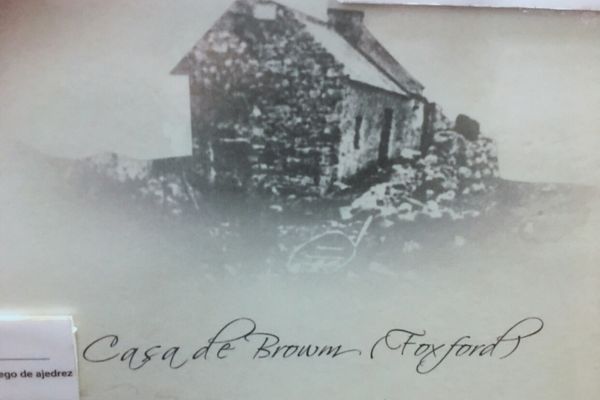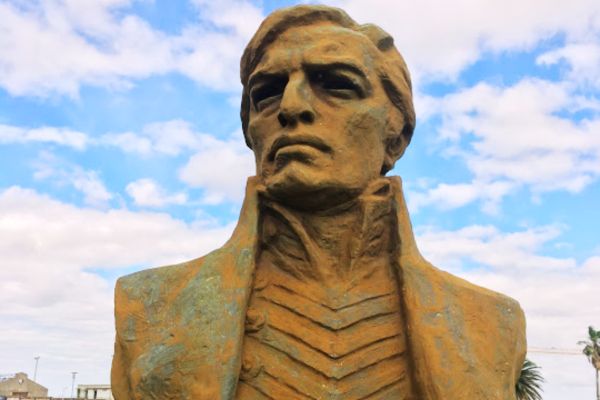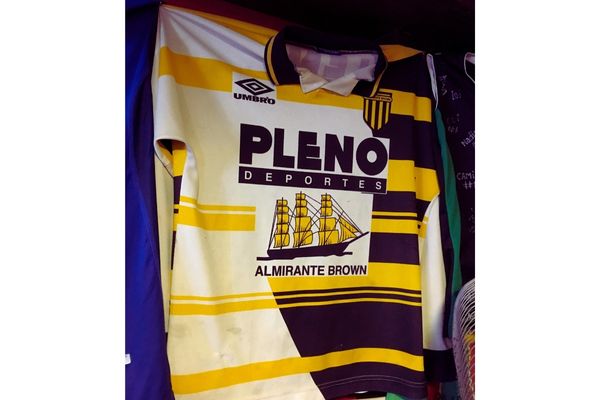It’s the late 1790s, and a young man named William is walking alongside the Delaware River, probably with little idea that he’s about to shape the future of a country half a world away. He spots a ship docked nearby and, driven by curiosity, starts chatting with the captain. The conversation leads to a job offer — and William accepts. Just like that, a casual walk turns into a lifelong voyage.
That chance encounter would eventually see William become a national hero in Argentina — and have his name chanted by football fans every week. So, who was William? How did he get from Ireland to America, then all the way to South America? And what does he have to do with football?
From Foxford to the Seas

William Brown was born in 1777 in Foxford, a small town in County Mayo on Ireland’s rugged west coast. As a teenager, he emigrated to North America — possibly to what would later become the United States (it was still freshly post-independence at that point). Like many at the time, he was chasing new opportunities.
After landing in America, Brown’s fascination with ships led him to take work as a cabin boy, where he learned the ropes — literally. He worked his way up through the ranks, becoming an experienced sailor. At some point, he was conscripted into the British Royal Navy, possibly during the Napoleonic Wars. But it was his later adventures that really cemented his place in history.
Becoming Argentina’s First Admiral

Brown eventually made his way to South America, and in the early 19th century — just as Argentina was fighting for independence from Spanish colonial rule — he found his true calling. Brown lent his skills to the revolutionary forces and went on to become the founder of the Argentine Navy.
Yes, you read that right — an Irishman from Mayo became Argentina’s first admiral.
He commanded fleets during key naval battles, especially during the Argentine War of Independence and the Cisplatine War with Brazil. He’s credited with modernising Argentina’s naval power and protecting the young nation’s maritime borders. By the time he passed away in 1857 in Buenos Aires, he was celebrated as a war hero, and to this day, he’s revered across the country.
His final resting place? The Recoleta Cemetery in Buenos Aires — a place reserved for Argentina’s most important figures.
From War Hero to Football Club
Brown’s legacy lives on in Argentine schools, statues, streets, and neighbourhoods — and yes, even on the football pitch.

In 1912, a club named Club Almirante Brown (Admiral Brown) was founded in Isidro Casanova, a city in Buenos Aires Province. They took their name directly from the admiral and have proudly carried it ever since. While the club hasn’t reached the top of the football pyramid, it has a loyal and passionate fanbase, competing in Argentina’s Primera Nacional, the country’s second division.
They’re not alone either — there are other clubs named in Brown’s honour:
-
Guillermo Brown of Puerto Madryn
-
Brown de Adrogué, another Buenos Aires-based team
-
The original Brown Athletic Club, an older team no longer active
Each one is a nod to a man who helped shape Argentina’s early history.
Irish Roots, Argentine Pride
Back in Foxford, Brown’s legacy is kept alive too. There’s a museum in his honour, where you’ll even find Almirante Brown football shirts on display. Every so often, the Argentine Navy visits the town to lay a wreath at his memorial, a tradition that underscores the deep respect still held for their Irish-born admiral.
And during the World Cup? Foxford cheers for Argentina — unless, of course, they’re playing Ireland.
Like Stories with Football, History & a Twist?
If you enjoyed the tale of the Irishman who became Argentina’s naval hero — and ended up with football clubs named after him — you might also like these:
The Name the River Delivered – How River Plate got its name from a shipping label and a bit of imagination.
The Secret Beneath El Monumental – What horseshoes found during renovations revealed about Argentina’s iconic stadium.
The League with No Away Fans – Why Argentine football has one of the strictest fan travel bans in the world.
How a Single Match Cost Boca Juniors Its Identity – The game that decided Boca’s legendary blue and yellow colours.
The Journey Behind a Legendary Nickname – How Plymouth Argyle got a name fit for a ship — and a city by the sea.
